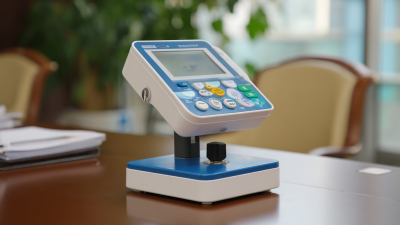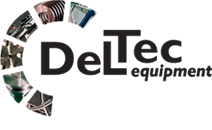Exploring the Benefits of Tester Line in Modern Technology Solutions
In today's rapidly evolving technology landscape, the implementation of a tester line has emerged as a pivotal element in enhancing product quality and operational efficiency. According to the latest report by Gartner, companies that utilize automated testing frameworks, including tester lines, can reduce test cycles by up to 40%, significantly accelerating time-to-market for new products. Additionally, a survey by the International Software Testing Qualifications Board (ISTQB) reveals that organizations leveraging a robust tester line experience a 50% drop in post-release defects, showcasing the critical role these systems play in maintaining high standards and customer satisfaction. As businesses strive for agility in technology solutions, integrating tester lines into their workflows not only streamlines processes but also fosters an environment of continuous improvement and innovation.

Understanding Tester Line: Definition and Importance in Technology
The term "Tester Line" refers to a specialized framework or a dedicated set of resources designed for the testing and validation of technological applications and systems. In modern technology solutions, a Tester Line plays a critical role by ensuring that products function as intended before they reach end users. This process not only helps in identifying potential bugs and issues but also serves as a bridge between development and deployment, enhancing the overall reliability of technology solutions.
The importance of Tester Lines in technology cannot be overstated. By implementing structured testing protocols, companies can significantly reduce the risk of failures and increase user satisfaction. A well-organized Tester Line allows for systematic evaluation of applications through various testing methods, such as automated tests, performance assessments, and user acceptance testing. This proactive approach not only mitigates risks associated with software malfunctions but also fosters continuous improvement, enabling organizations to swiftly adapt to emerging challenges in the fast-paced tech landscape.
Key Features of Tester Line in Modern Technology Solutions
The Tester Line has become an integral component of modern technology solutions, offering a range of key features that enhance product reliability and performance. One of the most significant benefits is its ability to facilitate automated testing processes, which have been shown to increase testing efficiency by up to 40%, according to a recent report by the International Software Testing Qualifications Board (ISTQB). This efficiency enables organizations to deliver high-quality software faster, an essential factor in today’s competitive tech landscape.
Another critical feature of the Tester Line is its support for continuous integration and continuous delivery (CI/CD) practices. By integrating testing seamlessly within the software development lifecycle, teams can identify and address defects earlier in the process. A survey conducted by the DevOps Institute revealed that organizations implementing CI/CD frameworks observed a 25% reduction in deployment time and a 30% decrease in production incidents. These improvements not only enhance the user experience but also significantly reduce the cost associated with post-release fixes, positioning the Tester Line as a pivotal asset in modern technology solutions.
Exploring the Benefits of Tester Line in Modern Technology Solutions
| Feature | Description | Benefit | Implementation |
|---|---|---|---|
| Automated Testing | Tester line provides automated testing tools that streamline the testing process. | Increased efficiency and reduced time for test cycles. | Easy integration with existing CI/CD pipelines. |
| Real-Time Reporting | Offers real-time insights into testing progress and results. | Quick identification of issues and improved communication. | Dashboards and alerts available for stakeholders. |
| Cross-Platform Compatibility | Supports testing across different operating systems and devices. | Broader test coverage and user experience representation. | Utilizes cloud infrastructure for seamless access. |
| User-Friendly Interface | Intuitive UI that simplifies the creation of test cases. | Reduced learning curve for new users. | Provided training modules for onboarding. |
| Customizable Frameworks | Allows users to tailor testing frameworks to specific project needs. | Enhanced flexibility and adaptability in testing. | Modules available for customization and extensions. |
How Tester Line Enhances Quality Assurance in Software Development
In modern software development, the Tester Line has emerged as a crucial component in enhancing quality assurance processes. With the proliferation of applications, both web-based and mobile, implementing comprehensive testing frameworks is essential for delivering high-quality products. The integration of advanced technologies, such as machine learning and natural language processing, has transformed the automation testing landscape. These technologies enable organizations to conduct thorough API testing, performance testing, and other quality assurance measures more efficiently and effectively.
Furthermore, as industries evolve, adopting frameworks like DevSecOps has proven beneficial for ensuring security alongside development and operations. This convergence not only streamlines workflows but also fortifies application security, creating a robust environment for innovation. The rise of end-to-end AI testing solutions further expands the scope of traditional testing roles, empowering engineers and developers to collaboratively enhance software quality. This dynamic shift exemplifies how the Tester Line is not just about finding bugs but about fostering a holistic approach to product excellence in the rapidly changing technological landscape.

Real-World Applications of Tester Line Across Various Industries
In today’s fast-paced technological landscape, the Tester Line has emerged as a crucial tool across various industries, enhancing the efficiency and reliability of technology solutions. From telecommunications to automotive manufacturing, organizations leverage Tester Line systems to streamline their processes. For instance, in the automotive industry, these systems enable thorough testing of complex electronic components, ensuring that each part meets stringent safety and performance standards.
In healthcare, the Tester Line plays a pivotal role in the development of medical devices. By employing advanced testing protocols, manufacturers can identify any potential flaws before these devices reach the market. This not only accelerates the product development cycle but also ensures patient safety, making Tester Line an indispensable asset in this sector.
**Tip:** When implementing a Tester Line in your industry, consider starting with a pilot project to assess its impact. This gradual approach allows you to identify potential challenges and adapt your methodologies without overwhelming your existing processes. Also, regular training and updates for your team can maximize the benefits of this technology.

Future Trends in Tester Line Technology and Its Potential Impact
The evolution of Tester Line technology is poised to significantly shape modern technology solutions, particularly with the increasing complexity of systems requiring robust testing frameworks. According to a recent report by Market Research Future, the global test automation market is expected to reach $50 billion by 2026, growing at a compound annual growth rate (CAGR) of over 20%. This surge underscores the critical role that advanced Tester Line technologies will play in ensuring quality and efficiency in software development and deployment, enabling companies to reduce time-to-market while enhancing overall product reliability.
Looking ahead, several trends are emerging within the Tester Line domain that could redefine its impact on technology solutions. The integration of artificial intelligence into testing processes is expected to facilitate more adaptive and intelligent testing frameworks. A study by Gartner indicates that by 2025, 70% of organizations will be using AI-driven testing capabilities to improve software quality. Additionally, the rise of continuous testing in DevOps methodologies is likely to foster real-time feedback loops, which can dramatically improve the speed and frequency of releases while maintaining product integrity. These advancements signal a transformative future for Tester Line technologies, promising not only to enhance efficiency but also to deliver more reliable and superior technology solutions.
Related Posts
-

Water Testing Meter Innovations and Market Trends at the 138th Canton Fair in 2025
-

Innovative Solutions for Precision Line Testers
-

5 Reasons Why the Tester Line is the Best Choice for Your Production Needs
-

How to Choose the Right Resistance Tester for Your Electrical Applications
-

The Ultimate Guide to Choosing the Best Phone Testing Equipment for Your Needs
-

The Future of Impact Testing Technology: Innovations Shaping Enhanced Durability Standards





